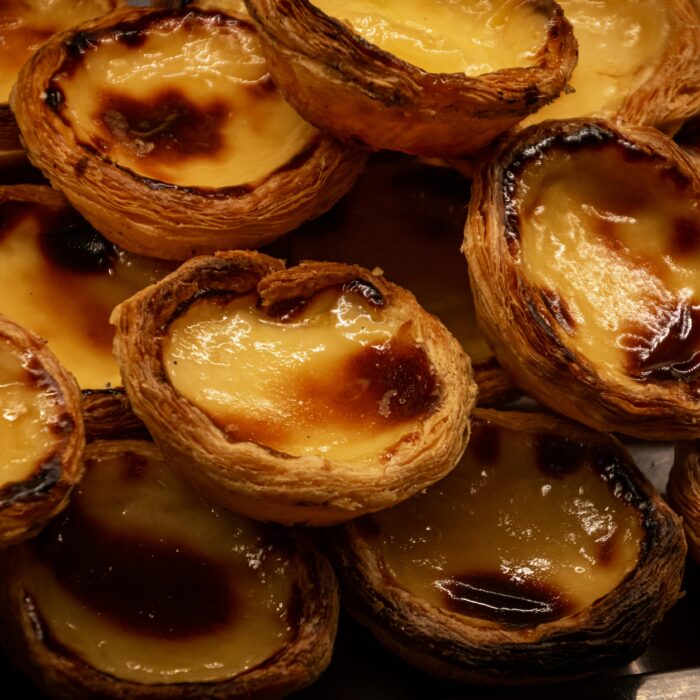You have no items in your cart. Want to get some nice things?
Go shopping
Carmen Miranda (9 February 1909 – 5 August 1955) was a Brazilian samba singer, Broadway actress and Hollywood film star popular in the 1940s and 1950s. She was noted for the signature fruit hat outfit she wore in the 1943 film, The Gang's All Here.
Author’s note:
I’ll be the first to acknowledge that I’m an improbable carioca (local term for a citizen of Rio de Janeiro). I can sunburn in 15 minutes flat, for one thing. But bear with me.
I’m a junior at Princeton, studying Spanish, Portuguese, Latin American Studies and Brazilian Studies. Over the course of my first two years in college I fell in love with Rio from afar through scratchy samba recordings and in 2011, I finally found my way to the city for a semester abroad. It was hyperbolic – the city both was and wasn’t what I’d dreamed, and I spent a lot of my six months chasing after the ghosts of my favourite writers and musicians.
I had to go home for Christmas, but on my way to study in Argentina, I managed to make a pit stop for Carnaval. The Carnaval of the tourist brochures – the samba schools – is only a tiny fraction of the carioca celebration; from January to March there are over 500 street parties (official and unofficial) called blocos. If you get the chance, come see for yourself: they prove that samba’s not a spectator sport.
I wrote something every day while I was in Rio, trying to leave a record of my time there. This is a kind of diary, so read with caution.
A concrete building, too small to be a UFO but too big to be a public bathroom, in a dusty, abandoned playground between two highways.
Unfortunately, I was in the right place. I’d finally found the Carmen Miranda Museum.
I had put “CM Museum” on my itinerary for the day, crossed it out when it started looking like I wasn’t going to have enough time, and then, in a flush of guilt and determination, boldly reinstated it in all caps: “CARMEN MIRANDA MUSEUM”. The third time’s the charm.
The first time I tried to make it here in June, a guy tried to mug me. The second time, a few weeks ago, I lost the museum. I don’t know how else to explain it. I saw it on the bus when I was heading up to Centro and plotted out exactly how to get to it by walking down the Aterro do Flamengo. But somehow I arrived at Botafogo without running into it, and by that time I was too sweaty and too late for other commitments to turn around.
Throughout my search for the Carmen Miranda museum, I’d spoken with at least half a dozen cariocas who had no idea it existed. It was more than ignorance; they were convinced that it did not, in fact, exist.
“I’ve been living here my whole life,” said a silver-haired jogger, “and I’ve never heard of the Carmen Miranda Museum.”
But it’s on the park map…
Sensing, however, that I was somehow challenging his authority as a Rio native, I backed off and thanked him for his time. I started feeling disoriented as I headed down the aterro and stopped at a little tent set up by a tour guide company.
Can you tell me how to get to the Carmen Miranda Museum?
The woman behind the table looked at me as though I’d grown two heads, but her friend piped up. “Oh, I’ve been there a couple times, it’s wonderful!”
Now it was my turn to give her a skeptical look. I didn’t know much about the Carmen Miranda Museum – least of all how to get there, apparently – but I knew that the museum was somewhat less than wonderful. It was meant to be much, much more, for one thing. If I may quote from my own translation of Ruy Castro’s biography:
[When Carmen died], there was a run on record shops, and nothing of Carmen’s was left in stock. On the seventh day, twelve funeral Masses were held in Rio de Janeiro alone.
Aware that all of these displays of love and affection could just as easily be forgotten, Carmen’s widower David Sebastian met with Herbert Moses, Joaquim Rolla, Manuel Barcelos and Aloysio de Oliveira at the Hotel Glória on August 25th, 1955, to see to the creation of the Carmen Miranda Foundation. The foundation would be a center for cardiovascular disease research and a medical center, a clear and concrete homage to the Little Notable One. Unfortunately, the idea died in the planning stage. David Sebastian did officially give all of Carmen’s possessions to the state of Brazil – this included her outfits from films and shows, her heels, props, turbans, personal documents, photographs, scores, scripts, and decorations. At the time, the donation was estimated at a total value of $250,000, and it would be the starting point for the foundation’s bequest.

What’s left today is a far cry from the legacy dreamed up by Carmen’s friends and family in 1955. The museum is essentially one room – a short dark gallery in a bleak little concrete structure. To the left are glass cases holding what must have been an infinitesimal fraction of Carmen’s wardrobe and a short timeline-biography written by Ruy Castro, and to the right a miniature auditorium, which is an extraordinarily generous way of putting it. Next to a display of turbans, there are a few rows of plastic chairs and a medium-sized TV playing excerpts from Carmen’s films. When I walked in, my heart sank.
Mystifyingly, there were three museum employees waiting to greet me and point me towards the guest book. My working hypothesis is that they originally had a lone employee, but they kept having to replace them because the solitude and the poverty of the place drove them all insane, and they eventually decided that it would be cheaper and more reliable to just hire a handful, just to keep each other company. I was the third person to sign the guest book that day. The first two were still in the museum – an Irishman named Gavin and his Brazilian boyfriend.
“It’s a sad little place, isn’t it?” I said to Gavin, and we struck up a lively and indignant conversation about Brazilian bureaucracy. Gavin had just come from a 10-day trip to Salvador, which so horrified him that he practically refused to leave the hotel. Eventually Gavin’s boyfriend came over to us and started commiserating and reading off the Ruy Castro biography.
“Why on earth didn’t they put the museum in Lapa, or in Centro, where she lived?” asked Gavin’s boyfriend.
In fact, they tried. Back in 1956, Rio mayor Negrão de Lima signed Resolution #886, creating the Carmen Miranda Museum at 13 Travessa do Comércio, where Carmen grew up. A city councilman even proposed changing the name of the street to Rua Carmen Miranda. Not only was the street name not changed, but that museum was never built; Carmen’s estate wandered from museum to museum, even spending a stint at the Novo Rio bus station, before winding up in this grimy little home.
Then the two of them noticed – Gavin’s boyfriend translating for him – that Carmen had a nose job in the early 40s. They found this funny. I found it less so. Carmen had always been hypersensitive about her nose, and the surgery went horribly wrong. As Barsante puts it:
After several blood transfusions and a period when she was forced to drink gallons of whey to flush her liver, Carmen was kept in the hospital for seven weeks. Her recovery was slow and difficult, punctuated by periods of profound depression. During one of her worst episodes she kept insisting to see a mirror; the request was refused, but she was so vociferous that the attending gave in. Frightened, she gazed at a swollen face, its nostrils deformed by the infection. In a moment of despair she had told her mother, ‘Mamãe, if I don’t get back to normal I swear I’ll kill myself. I can’t live this way. I can’t be a monster.’
Aloysio de Oliveira relates in his book From the Band to the Moon, ‘there was a time when Carmen’s only topic of conversation was her nose. She thought it was big, bulbous, and that it didn’t photograph well. During shoots she would always confer with the cinematographers, asking them to shoot her from the angles that would most downplay the size of her nose.’
I related all this in the grimmest tones possible, and Gavin’s boyfriend wandered off to watch the film.
“Er, how did you get interested in Carmen Miranda?” asked Gavin politely.
I told him – an author living in Princeton was writing a biography of Carmen Miranda and needed articles and books translated from Portuguese. Being in second-semester Portuguese, I considered myself infinitely qualified and leaped into the project with the kind of enthusiasm that leads to poolside head injuries. Several hundred pages later, I was bonded to Carmen for life.
Just then, my phone rang. “I’ll be over there,” said Gavin, and wandered off to watch Carmen swirl around in technicolor with his boyfriend. Soon, I was wrapped up in my phone conversation and walked out of the museum almost unthinkingly, heading down towards the speaker series I was going to at UFRJ (Universidade Federal do Rio de Janeiro).
I felt a little twinge that I hadn’t communed sufficiently with Carmen – it hadn’t been cathartic; it had felt more like poking around in someone’s closet than paying tribute to a star. But I had to come. And although I would not qualify the museum as wonderful, I will put it on the record, cariocas: the Carmen Miranda Museum exists. What’s more, she deserves better.
Flora's Rio diary was hosted by the Rio-based culture magazine Piauí, who has kindly allowed us to republish a selection of her posts here on Litro.




